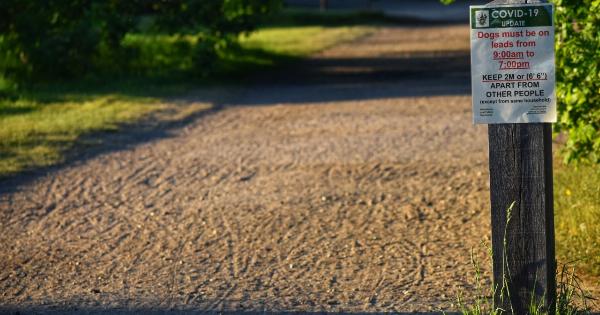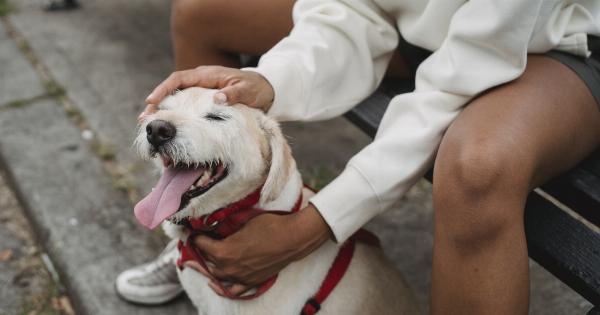When it comes to our furry friends, maintaining a healthy weight is just as important as it is for humans. However, unlike us, dogs solely rely on us to provide them with the right diet, exercise, and weight management strategies.
Just like humans, dogs can easily gain weight if they consume more calories than they burn. In this article, we will discuss when a dog needs to lose weight and provide some helpful tips on how to assist them in achieving a healthy weight.
Signs That Your Dog Needs to Lose Weight
Dogs come in various shapes and sizes, so it’s essential to understand what a healthy weight looks like for your specific dog breed. However, there are some common signs that indicate your furry friend may be carrying extra pounds:.
1. Visual and Physical Observations: If you cannot easily feel your dog’s ribs, or if their waistline is not distinguishable, it might be an indication that they are overweight.
Additionally, lethargy and difficulty in performing daily activities can also be signs of excess weight.
2. Weight Comparison: If you are unsure whether your dog needs to lose weight, comparing them to the breed standard or consulting your veterinarian can provide some guidance.
They will be able to tell you if your dog is within a healthy weight range or if they are overweight and in need of weight management.
3. Health Issues: Obesity in dogs can lead to numerous health problems, including diabetes, joint pain, heart disease, respiratory issues, and a decreased lifespan. If your dog is displaying any of these health concerns, weight loss might be recommended.
How to Help Your Dog Lose Weight
If you determine that your furry friend needs to shed some extra pounds, there are several steps you can take to help them reach a healthy weight:.
1. Consult with Your Veterinarian
Before making any changes to your dog’s diet or exercise routine, it is crucial to consult with your veterinarian.
They will be able to conduct a thorough examination, determine your dog’s current weight and body condition score, and provide expert advice tailored to your dog’s specific needs.
2. Adjust Their Diet
Just like humans, dogs need a well-balanced diet that meets their nutritional requirements while also helping them achieve and maintain a healthy weight.
Your veterinarian may recommend a diet formulated for weight loss or provide guidance on adjusting portion sizes. It’s essential to follow their recommendations to ensure your dog receives the necessary nutrients while losing weight.
3. Avoid Free Feeding
Free feeding, where food is available to your dog throughout the day, can make it challenging to monitor their calorie intake. Instead, establish a feeding schedule with specific portion sizes.
You can divide their daily food allowance into two or more meals, which can also help prevent begging or overeating.
4. Choose Low-Calorie Treats
Treats are an essential part of dog training and can also be used as rewards during weight loss efforts. However, it’s crucial to choose low-calorie treats or opt for healthy alternatives such as small pieces of carrot or apple.
Remember, treats should only make up a small percentage of your dog’s daily caloric intake.
5. Promote Exercise
Exercise is a vital component of weight management for dogs. Engaging in physical activities not only helps burn calories but also provides mental stimulation and strengthens the bond between you and your furry friend.
Depending on your dog’s age, breed, and overall health, you can choose activities such as walking, jogging, swimming, or playing fetch.
6. Gradual Weight Loss
Rapid weight loss can be unhealthy for dogs, just like it is for humans. It’s essential to aim for gradual weight loss under the guidance of your veterinarian.
Typically, losing 1-2% of body weight per week is considered a safe and sustainable target.
7. Monitor Progress
Regularly monitor your dog’s progress to ensure they are steadily losing weight. Keep track of their weigh-ins, body condition score, and any changes in their behavior or health.
This monitoring will help you and your veterinarian make any necessary adjustments to the weight loss plan.
8. Be Consistent and Patient
Weight loss takes time, and it’s important to be patient throughout the journey.
Consistency is key, both in terms of sticking to the recommended diet and exercise routine and in providing the emotional support and encouragement your dog needs along the way.
9. Consider Professional Help
In some cases, weight loss might be more challenging, or your dog may have underlying health issues that contribute to their weight gain.
In such situations, your veterinarian may refer you to a veterinary nutritionist or a professional dog trainer specializing in weight management. These experts can provide additional guidance and support to help your dog reach their optimal weight.
10. Maintain a Healthy Weight
Once your dog has achieved their weight loss goals, the journey doesn’t end there. It’s essential to maintain a healthy weight long-term to ensure their overall well-being.
Work with your veterinarian to establish a maintenance plan that includes regular check-ups, appropriate portions, and continued exercise.
Conclusion
Weight management is a crucial aspect of your dog’s overall health and well-being. By being vigilant and proactive, you can identify when your dog needs to lose weight and take the necessary steps to assist them in their weight loss journey.
Remember to consult with your veterinarian, adjust their diet, promote exercise, and be patient throughout the process. With your dedication and support, your furry friend will achieve and maintain a healthy weight, leading to a happier and longer life.





























